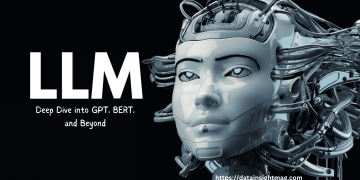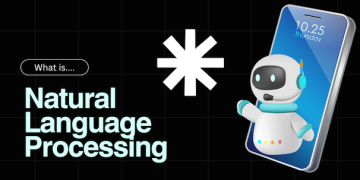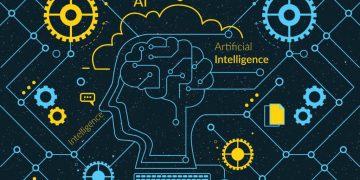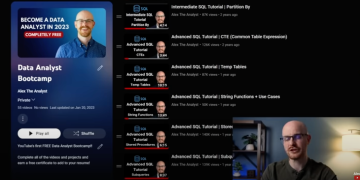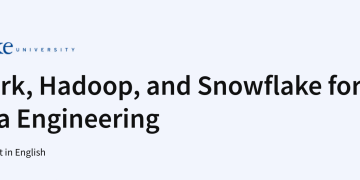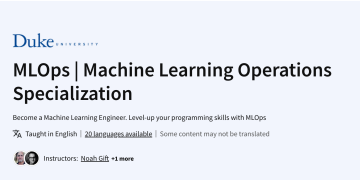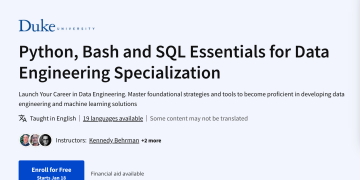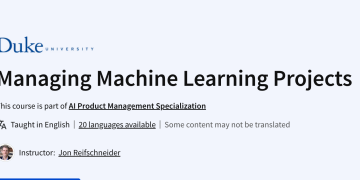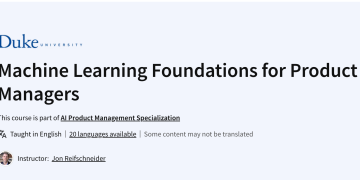Data analysis is a crucial skill in today’s data-driven world. Python, with its powerful libraries and frameworks, has become the go-to programming language for data analysis tasks. Whether you’re a beginner or an experienced programmer, this article will guide you through the process of learning data analysis with Python. From the basics of Python programming to advanced data manipulation techniques, statistical analysis, and visualization, you’ll gain the knowledge and skills necessary to become proficient in data analysis using Python.
What is Data Analysis?
Data analysis is the process of inspecting, cleaning, transforming, and modeling data to uncover useful information, draw conclusions, and support decision-making. It involves various techniques, such as data manipulation, visualization, and statistical analysis, to gain insights from structured or unstructured data. Data analysis plays a vital role in numerous domains, including business, finance, healthcare, marketing, and social sciences.
2. Why Learn Data Analysis with Python?
Python has gained immense popularity among data analysts due to its simplicity, versatility, and rich ecosystem of libraries and frameworks specifically designed for data analysis. Learning data analysis with Python offers several advantages:
- Ease of Use: Python has a clean and readable syntax, making it easier to learn and understand for beginners.
- Powerful Libraries: Python provides a wide range of libraries such as NumPy, Pandas, Matplotlib, and Scikit-learn that simplify complex data analysis tasks.
- Community Support: Python has a vast and active community of data analysts and developers who provide support and contribute to the development of data analysis tools.
- Integration with Other Technologies: Python seamlessly integrates with other technologies, allowing data analysts to incorporate their analysis into web applications, databases, and more.
3. Getting Started with Python
Before diving into data analysis, it’s essential to familiarize yourself with the basics of Python programming. Here are a few steps to get started:
- Install Python: Visit the official Python website (https://www.python.org) and download the latest version of Python for your operating system. Follow the installation instructions to set up Python on your machine.
- Interactive Python Interpreter: Python comes with an interactive interpreter that allows you to execute Python code line by line. Open the interpreter and start experimenting with simple Python statements and expressions.
- Python IDEs: Integrated Development Environments (IDEs) such as PyCharm, Spyder, and Jupyter Notebook provide a more feature-rich and convenient environment for writing and executing Python code. Choose an IDE that suits your preferences and install it.
- Basic Python Syntax: Learn the basic syntax of Python, including variables, data types, operators, control flow statements, functions, and classes. Understanding these fundamentals will help you write effective and efficient Python code.
4. Python Libraries for Data Analysis
Python offers a wide range of libraries specifically built for data analysis. Here are some essential libraries you should familiarize yourself with:
- NumPy: NumPy provides efficient numerical computing capabilities in Python. It includes a powerful N-dimensional array object, mathematical functions, linear algebra operations, and random number generation.
- Pandas: Pandas is a popular library for data manipulation and analysis. It offers data structures like DataFrame and Series, which simplify handling structured data. Pandas provide various functions for filtering, grouping, reshaping, and merging data.
- Matplotlib: Matplotlib is a versatile plotting library that allows you to create a wide range of visualizations, including line plots, scatter plots, bar plots, histograms, and more. It provides extensive customization options to make your plots informative and visually appealing.
- Scikit-learn: Scikit-learn is a comprehensive library for machine learning in Python. It offers a wide range of algorithms for classification, regression, clustering, and dimensionality reduction. Scikit-learn also provides tools for model evaluation and selection.
These libraries, along with many others, form the foundation of data analysis in Python. Learning how to effectively use these libraries will enable you to perform a wide range of data analysis tasks efficiently.
5. Data Manipulation with Pandas
Pandas is a powerful library that provides high-performance, easy-to-use data structures, and data analysis tools. It simplifies various data manipulation tasks, such as cleaning, transforming, and reshaping data. Here are some key topics to explore in Pandas:
- Data Structures: Pandas introduces two primary data structures: Series and DataFrame. A Series represents a one-dimensional array with labeled indexes, while a DataFrame is a two-dimensional table with labeled columns and rows.
- Data Cleaning: Pandas offers numerous functions to handle missing data, duplicate records, and outliers. You can use functions like
dropna(),fillna(),drop_duplicates(), and more to clean your data effectively. - Data Transformation: Pandas provides functions to transform data, including filtering rows based on conditions, selecting specific columns, applying functions to data, and merging multiple datasets.
- Data Aggregation: Pandas allows you to aggregate data using functions like
groupby(),pivot_table(), andresample(). These functions help summarize data based on specific criteria, such as calculating mean, sum, count, etc.
6. Exploratory Data Analysis
Exploratory Data Analysis (EDA) is a crucial step in data analysis that involves understanding the data, identifying patterns, and extracting insights. Here are some techniques commonly used in EDA:
- Descriptive Statistics: Descriptive statistics provide summary statistics such as mean, median, standard deviation, and quartiles. Pandas’
describe()function is useful for generating descriptive statistics for numerical columns. - Data Visualization: Visualizing data helps identify trends, outliers, and relationships between variables. Matplotlib and Seaborn libraries provide a wide range of plots, including scatter plots, histograms, box plots, and more.
- Correlation Analysis: Correlation analysis measures the relationship between variables. Pandas’
corr()function calculates the correlation coefficient between columns, and heatmaps can be used to visualize correlations. - Hypothesis Testing: Hypothesis testing allows you to test the significance of observations or relationships in your data. Python’s
scipy.statsmodule provides various statistical tests, such as t-tests and chi-square tests.
7. Data Visualization with Matplotlib
Data visualization is a powerful tool for effectively communicating insights and patterns in your data. Matplotlib provides a comprehensive set of functions for creating various types of plots. Here are some popular plot types:
- Scatter Plots: Scatter plots are used to identify relationships and patterns between two continuous variables. Matplotlib’s
scatter()function allows you to create scatter plots with customizable markers and colors. - Bar Plots: Bar plots are effective for comparing categorical variables or displaying frequency distributions. Matplotlib’s
bar()andbarh()functions can be used to create vertical and horizontal bar plots, respectively. - Histograms: Histograms show the distribution of a single variable. Matplotlib’s
hist()function allows you to create histograms with adjustable bin sizes and styles. - Line Plots: Line plots are useful for visualizing trends over time or continuous variables. Matplotlib’s
plot()function is commonly used to create line plots.
8. Statistical Analysis with Python
Python provides a wide range of libraries for statistical analysis. These libraries offer functions and methods to perform statistical tests, model fitting, and inference. Some essential libraries for statistical analysis include:
- SciPy: SciPy is a library that provides functions for scientific computing and statistical analysis. It includes modules for optimization, integration, interpolation, signal processing, and more.
- StatsModels: StatsModels is a Python library that specializes in statistical modeling, including linear regression, generalized linear models, time series analysis, and more. It also provides tools for statistical tests and diagnostics.
- PyMC3: PyMC3 is a probabilistic programming library that allows you to perform Bayesian statistical modeling and inference. It provides a high-level syntax for specifying models and efficient algorithms for model fitting.
These libraries enable you to perform a wide range of statistical analyses, from basic hypothesis testing to advanced modeling techniques.
9. Machine Learning for Data Analysis
Machine learning is a subset of artificial intelligence that enables systems to learn and make predictions or decisions based on data. Python provides powerful libraries for machine learning, making it a popular choice for data analysts. Some essential machine learning libraries in Python are:
Scikit-learn: Scikit-learn is a comprehensive library for machine learning tasks. It includes algorithms for classification, regression, clustering, dimensionality reduction, and more. Scikit-learn also provides utilities for data preprocessing, model evaluation, and model selection.
TensorFlow: TensorFlow is an open-source library for machine learning and deep learning. It allows you to build and train neural networks for various tasks, such as image classification, natural language processing, and time series analysis.
Keras: Keras is a high-level neural networks API that runs on top of TensorFlow. It simplifies the process of building and training deep learning models, making it more accessible to beginners.
With these libraries, you can apply machine learning algorithms to your data and make predictions or uncover patterns and insights.
10. Web Scraping and Data Analysis
Web scraping is the process of automatically extracting data from websites. Python provides several libraries for web scraping, such as BeautifulSoup and Scrapy. Here’s how you can combine web scraping and data analysis:
Identify Target Websites: Determine the websites that contain the data you need for your analysis. Look for websites that have publicly accessible data or APIs.
Web Scraping Tools: Choose a web scraping library like BeautifulSoup or Scrapy, depending on your requirements. These libraries provide functions and methods to extract data from HTML or web APIs.
Data Extraction: Use the web scraping library to extract the desired data from the target websites. Parse the HTML structure, find relevant elements, and extract the data into a structured format like CSV or JSON.
Data Analysis: Once you have the extracted data, you can perform various data analysis tasks using Python libraries like Pandas, NumPy, and Matplotlib. Clean the data, perform exploratory analysis, and draw meaningful insights.
11. Time Series Analysis with Python
Time series analysis involves analyzing and modeling data that is collected over a series of time intervals. Python provides powerful libraries for time series analysis, such as Pandas and StatsModels. Here are some key steps in time series analysis:
Import Time Series Data: Load the time series data into Python, ensuring that the data is in a suitable format such as CSV or Excel.
Data Preprocessing: Preprocess the time series data by handling missing values, handling outliers, and converting the data into a time series object.
Visualize Time Series Data: Use libraries like Matplotlib or Seaborn to plot the time series data. Identify any trends, seasonality, or patterns in the data.
Time Series Modeling: Apply time series models such as Autoregressive Integrated Moving Average (ARIMA) or Seasonal ARIMA (SARIMA) to the data. Use libraries like StatsModels or Prophet for model fitting and forecasting.
Evaluate and Validate Models: Evaluate the performance of your time series models using evaluation metrics like mean squared error (MSE) or mean absolute error (MAE). Validate the models by comparing forecasted values with actual values.
12. Natural Language Processing
Natural Language Processing (NLP) involves analyzing and understanding human language using computational methods. Python provides powerful libraries for NLP, such as NLTK (Natural Language Toolkit) and SpaCy. Here are some key aspects of NLP:
Tokenization: Tokenization is the process of breaking text into individual words or sentences. Python libraries like NLTK and SpaCy provide functions for tokenizing text.
Text Preprocessing: Text preprocessing involves tasks like removing stop words, stemming or lemmatization, and handling special characters. These tasks help clean and normalize text data before further analysis.
Named Entity Recognition: Named Entity Recognition (NER) identifies and classifies named entities in text, such as names, organizations, locations, and dates. SpaCy provides robust NER capabilities.
Sentiment Analysis: Sentiment analysis determines the sentiment or opinion expressed in text. It helps understand the sentiment of customers, users, or social media users. Libraries like NLTK and TextBlob offer pre-trained sentiment analysis models.
13. Big Data Analysis with Python
Python is a versatile language that can handle big data analysis using various frameworks and libraries. Some popular options for big data analysis with Python are:
Apache Spark: Apache Spark is a distributed computing framework that provides high-level APIs for big data processing. It integrates well with Python through the PySpark library, enabling scalable data analysis.
Dask: Dask is a flexible library that provides parallel computing capabilities for tasks involving big data. It seamlessly integrates with Pandas and other Python libraries, allowing you to scale your data analysis workflows.
Hadoop: Hadoop is an open-source framework that allows distributed storage and processing of large datasets. Python can interact with Hadoop through libraries like Hadoop Streaming or Pydoop.
These frameworks enable you to work with large datasets and perform distributed data analysis efficiently.
14. Data Analysis Case Studies
To gain a deeper understanding of data analysis with Python, it’s helpful to explore real-world case studies. Here are a few examples:
E-commerce Sales Analysis: Analyzing sales data from an e-commerce platform to identify trends, popular products, and customer segmentation.
Social Media Sentiment Analysis: Analyzing social media data to understand public sentiment towards a particular product, brand, or event.
Stock Market Analysis: Analyzing historical stock market data to identify patterns, predict trends, and develop trading strategies.
Customer Churn Analysis: Analyzing customer data to identify factors that contribute to customer churn and develop retention strategies.
By studying these case studies, you’ll learn practical techniques for solving real-world data analysis problems using Python.
15. Resources for Further Learning
To continue your journey in learning data analysis with Python, here are some valuable resources:
Online Courses: Platforms like Coursera, edX, and DataCamp offer online courses specifically focused on data analysis with Python. These courses provide structured learning paths and hands-on projects.
Documentation and Tutorials: Explore the official documentation and tutorials of Python libraries like Pandas, NumPy, and Matplotlib. These resources provide in-depth explanations and examples.
Online Communities: Join online communities like Stack Overflow, Reddit, and Data Science forums to ask questions, share insights, and learn from other data analysts.
Books: There are several excellent books available on data analysis with Python, such as “Python for Data Analysis” by Wes McKinney and “Data Science Handbook” by Jake VanderPlas. These books provide comprehensive coverage of various data analysis topics.
Remember to practice regularly and apply your learnings to real-world projects to strengthen your skills and gain practical experience.
Frequently Asked Questions (FAQs):
Q: How long does it take to learn data analysis with Python? A: The time required to learn data analysis with Python depends on various factors, including your prior programming experience, the amount of time you dedicate to learning, and the complexity of the projects you undertake. With consistent effort and practice, you can start performing basic data analysis tasks within a few weeks and gradually progress to more advanced techniques over time.
Q: Do I need a background in statistics to learn data analysis with Python? A: While having a basic understanding of statistics can be helpful, it is not a prerequisite for learning data analysis with Python. Python libraries like Pandas and NumPy provide functions for statistical calculations, and there are resources available that explain statistical concepts in the context of data analysis using Python.
Q: Can I use Python for big data analysis? A: Yes, Python can be used for big data analysis. Libraries like Apache Spark and Dask allow you to process and analyze large datasets using Python. These frameworks provide distributed computing capabilities, enabling you to scale your data analysis workflows.
Q: What career opportunities are available for data analysts proficient in Python? A: Proficiency in data analysis with Python opens up various career opportunities. You can pursue roles such as Data Analyst, Business Analyst, Data Scientist, Data Engineer, or Machine Learning Engineer. Industries like finance, healthcare, e-commerce, and marketing heavily rely on data analysis, offering a wide range of career prospects.
Q: Are there any certifications for data analysis with Python? A: Yes, there are several certifications available for data analysis with Python. Organizations like Coursera, edX, and DataCamp offer certification programs that validate your skills and knowledge in data analysis. Additionally, certifications from recognized bodies like Microsoft, IBM, or SAS can add credibility to your profile.
Q: How can I showcase my data analysis projects to potential employers? A: Building a portfolio of data analysis projects is an effective way to showcase your skills to potential employers. Create a GitHub repository or personal website where you can share the code and results of your projects. Include a detailed description of each project, the data analysis techniques used, and the insights gained.
Conclusion
Learning data analysis with Python opens up exciting opportunities to extract insights and make informed decisions from data. In this article, we covered various aspects of data analysis, including Python basics, essential libraries, data manipulation, visualization, statistical analysis, machine learning, and more. By following the outlined topics and exploring additional resources, you’ll develop expertise in data analysis with Python. Start your journey today and unlock the power of data-driven insights.


